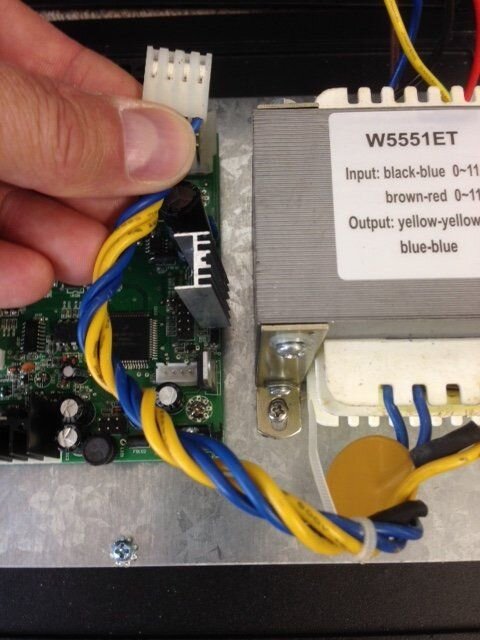Did the ASC1 previously work properly on your old dish?
I would take the controller out to the new dish and test for proper operation.
I am a firm believer in grounding and bonding, so you know where I stand on this subject. I would suggest that you disconnect the wires and coax from the controller and test between each wire and ground inside of your home (including the coax). Even though the dish does not have a dedicated ground rod, there might be voltage potential between the house and the dish (the dish may not have the best ground, but it is sitting on a pole encased in cement sunk in the ground). Check for voltage in excess of 1/2 volt with one probe on a wire and the other probe touching a ground source in the house (ASC1 case if plugged in, the cover plate screw, etc.). A voltage potential greater than .5v can create a significant amount of noise and erratic control.
When the dish drives long (past the satellite) and the dish must be moved back towards the previous satellite to acquire the target satellite sensor counts are not happening or being missed. Note that aging reed switches often have open/closure issues that cause erratic counts. The missed counts also could be due to a high level of noise masking the sensor cycles. This is often caused by an aging motor and dirty brushes. Capacitor filtering of the motor could reduce the effect of the interference, but I would try and identify the cause and address it at the source.
As the dish is not grounded, I would connect the sensor shield drain wire only inside to the GND terminal on the ASC1. Leave the other end at the actuator open and unconnected. The connection only to the actuator may actually be increasing the noise rather than bleeding it off.
I would take the controller out to the new dish and test for proper operation.
I am a firm believer in grounding and bonding, so you know where I stand on this subject. I would suggest that you disconnect the wires and coax from the controller and test between each wire and ground inside of your home (including the coax). Even though the dish does not have a dedicated ground rod, there might be voltage potential between the house and the dish (the dish may not have the best ground, but it is sitting on a pole encased in cement sunk in the ground). Check for voltage in excess of 1/2 volt with one probe on a wire and the other probe touching a ground source in the house (ASC1 case if plugged in, the cover plate screw, etc.). A voltage potential greater than .5v can create a significant amount of noise and erratic control.
When the dish drives long (past the satellite) and the dish must be moved back towards the previous satellite to acquire the target satellite sensor counts are not happening or being missed. Note that aging reed switches often have open/closure issues that cause erratic counts. The missed counts also could be due to a high level of noise masking the sensor cycles. This is often caused by an aging motor and dirty brushes. Capacitor filtering of the motor could reduce the effect of the interference, but I would try and identify the cause and address it at the source.
As the dish is not grounded, I would connect the sensor shield drain wire only inside to the GND terminal on the ASC1. Leave the other end at the actuator open and unconnected. The connection only to the actuator may actually be increasing the noise rather than bleeding it off.







